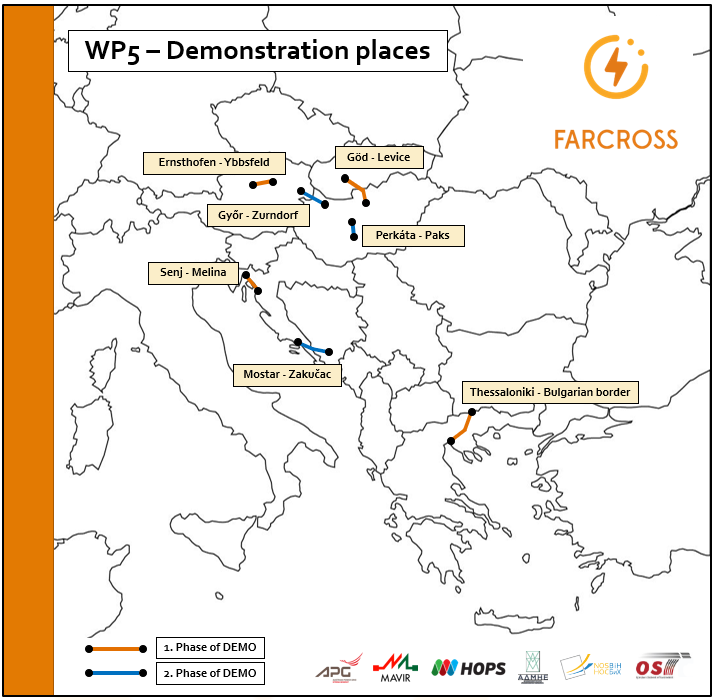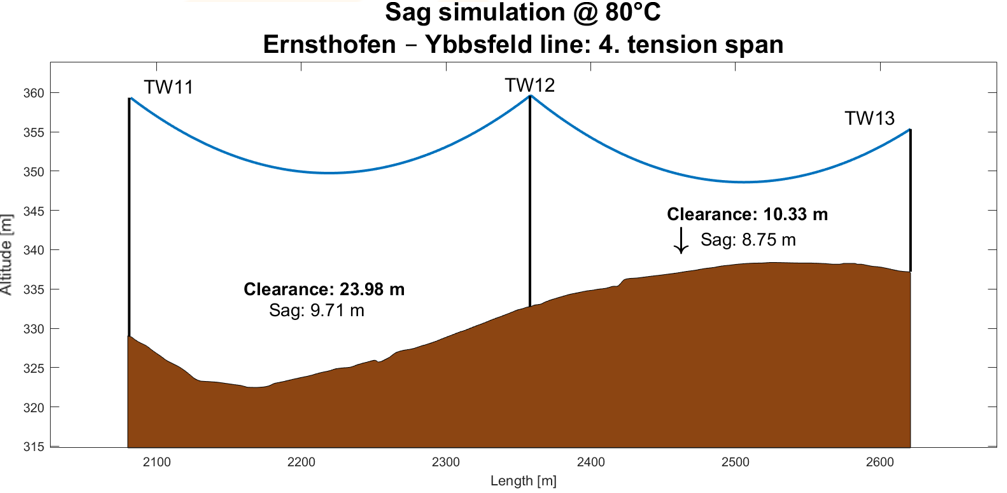DRL-H DEMO: Complex grid management technology for handling cross-border transmission line capacity-related issues
The DRL-H DEMO is the subject of WP5 with the general aim to implement a complex grid management technology for handling cross-border transmission line capacity-related issues. In the first semester, the main goal was to prepare the sensor installation to ensure the data collecting in the demonstration part of the project. FARCROSS partners have teamed up and reached the following milestones:
![]() Selection of transmission line
Selection of transmission line
To achieve a unified system in power line selection, a novel multi-criteria-based system was established. This system contains all the important information based on which the optimal overhead-lines can be selected to implement the dynamic line rating (DLR) system. This criteria system considers the absolute and relative curves of the power lines, the restrictive elements of the line, strategic plans in the regions, and historical events from the last few years. Based on the multi-criteria system, each TSO (APG, HOPS, MAVIR, NOSBiH, IPTO) determined on which power lines they need to build up the DLR system first.

Figure 1 Demonstration places in WP5
For the selected power lines all the technical, geographical, and historical data were collected to do the simulations for the critical span analysis. As a result of this process, a unified system has been developed that considers the sag position of the lower phase conductors. Based on the extent of the clearance level, the TSOs can define the so-called critical spans, where the sag problems due to thermal issues can occur first. This is an important part in the preparation, due to these critical spans determines the installation places of the sensors.

Figure 2 Critical span analysis for the selected power line

Figure 3 Critical span analysis for the selected power line
The project team with the cooperation of the sensor manufacturer companies (C&G, MONITECH) determined those critical laboratory tests that need to be performed on the sensors applied in the demonstration part of the project. These tests are important to find out whether there is any mechanical, electrical, or other type of stresses that could affect the proper work of the devices.

 This project has received funding from the European Union’s Horizon 2020 research and innovation programme under grant agreement No 864274
This project has received funding from the European Union’s Horizon 2020 research and innovation programme under grant agreement No 864274

